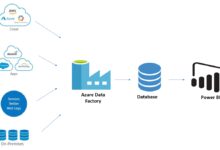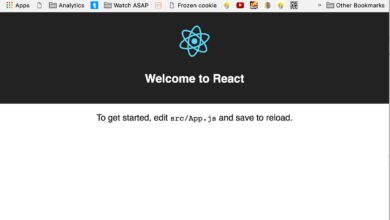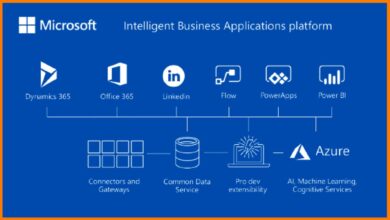Azure Portal Log In: 7 Proven Steps to Master Access Instantly
Logging into the Azure portal is your first step toward managing cloud resources with ease. Whether you’re a developer, administrator, or business owner, knowing how to securely and efficiently access your dashboard is crucial. Let’s break it down—simple, fast, and secure.
Azure Portal Log In: Understanding the Basics

The Azure portal is Microsoft’s web-based interface for managing cloud services, virtual machines, storage, networking, and more. Before diving into advanced configurations, you must first understand how the azure portal log in process works. It’s not just about entering a username and password—it’s about identity, authentication, and access control.
What Is the Azure Portal?
The Azure portal (portal.azure.com) is a unified console that allows users to deploy, configure, and monitor all Azure resources from a single location. It provides a graphical user interface (GUI) that simplifies complex cloud operations, making it accessible even to those with limited command-line experience.
- Centralized dashboard for cloud management
- Supports role-based access control (RBAC)
- Integrated monitoring, billing, and security tools
“The Azure portal is the front door to your cloud infrastructure—secure access means secure operations.” — Microsoft Azure Documentation
Why Secure Log In Matters
Every azure portal log in attempt is a potential entry point for threats. Unauthorized access can lead to data breaches, service disruptions, or financial loss due to unmonitored resource usage. That’s why Microsoft enforces multi-layered security protocols.
- Protects sensitive data and configurations
- Ensures compliance with regulatory standards (e.g., GDPR, HIPAA)
- Prevents unauthorized resource provisioning
Step-by-Step Guide to Azure Portal Log In
Successfully performing an azure portal log in involves more than just visiting a website. Follow these steps carefully to ensure a smooth and secure experience.
Step 1: Navigate to the Official Login Page
Always start by going to the official Microsoft Azure portal at https://portal.azure.com. Avoid third-party links or search engine ads that may lead to phishing sites.
- Bookmark the URL for future use
- Verify the SSL certificate (look for the padlock icon)
- Use a trusted device and network
Step 2: Enter Your Credentials
On the login screen, enter your work or school account email address associated with your Azure subscription. This is typically in the format user@company.com, not a personal Microsoft account (unless specifically configured).
- Double-check spelling to avoid lockouts
- Ensure Caps Lock is off
- Use an account with active Azure permissions
Step 3: Complete Multi-Factor Authentication (MFA)
After entering your password, you’ll be prompted for a second verification method. This could include:
- Mobile app notification (Microsoft Authenticator)
- Text message code
- Phone call verification
- Hardware security key (e.g., YubiKey)
MFA significantly reduces the risk of unauthorized access, even if your password is compromised.
Common Issues During Azure Portal Log In and How to Fix Them
Even experienced users encounter obstacles during the azure portal log in process. Here are the most frequent problems and their solutions.
Issue 1: ‘Account Not Found’ or ‘User Not Recognized’
This error usually means the email entered isn’t registered in the Azure Active Directory (Azure AD) tenant.
- Verify you’re using the correct organizational email
- Check if your account has been invited to the tenant
- Contact your Azure administrator to confirm your account status
If you’re using a personal Microsoft account by mistake, switch to your work or school account.
Issue 2: Password Reset Required
If your password has expired or been reset, you’ll be redirected to the password reset page. Follow the prompts at https://passwordreset.microsoftonline.com.
- Have access to your recovery email or phone number
- Answer security questions if configured
- Ensure your device isn’t blocked by conditional access policies
Issue 3: MFA Not Working
If your second factor fails—like not receiving a text or app notification—try these steps:
- Check your mobile signal or Wi-Fi connection
- Ensure the Microsoft Authenticator app is updated
- Use backup codes if previously generated
- Contact IT support for alternative verification
“Over 99.9% of account compromises can be prevented with multi-factor authentication.” — Microsoft Security Report
Using Different Account Types for Azure Portal Log In
Not all accounts are created equal when it comes to azure portal log in. Understanding the differences helps avoid confusion and access issues.
Work or School Accounts (Azure AD)
These are managed identities within an organization’s Azure Active Directory. They are the standard for enterprise access and support advanced features like conditional access, MFA enforcement, and group policies.
- Created and managed by IT administrators
- Can be synchronized with on-premises Active Directory
- Support single sign-on (SSO) across enterprise apps
Microsoft Personal Accounts
While personal Microsoft accounts (e.g., @outlook.com, @hotmail.com) can be used to create free Azure trials, they are not recommended for production environments due to limited governance and security controls.
- Suitable for learning and testing
- Limited integration with enterprise identity systems
- Not ideal for team collaboration or compliance
Guest Accounts (B2B Collaboration)
Organizations often invite external users as guests. These users retain their home directory identity but gain access to specific Azure resources.
- Useful for consultants, partners, or vendors
- Access is governed by invitation and RBAC
- Admins can revoke access at any time
Security Best Practices for Azure Portal Log In
Securing your azure portal log in process is not optional—it’s essential. A single compromised account can lead to massive cloud breaches.
Enable Multi-Factor Authentication (MFA)
MFA should be mandatory for all users, especially administrators. It adds a critical layer of protection beyond passwords.
- Enforce MFA via Conditional Access policies
- Use phishing-resistant methods like FIDO2 security keys
- Register multiple verification methods for redundancy
Learn more about setting up MFA at Microsoft’s MFA documentation.
Use Conditional Access Policies
Conditional Access allows you to define rules that control when and how users can log in based on risk, location, device compliance, and more.
- Block access from untrusted regions
- Require compliant devices for admin roles
- Detect and respond to risky sign-ins automatically
Monitor Sign-In Activity
Regularly review sign-in logs in Azure AD to detect suspicious behavior.
- Check for logins from unusual locations or times
- Investigate failed login attempts
- Set up alerts for high-risk events
Access logs via Azure Active Directory > Monitoring > Sign-in logs.
Advanced Access Methods for Azure Portal Log In
Beyond the standard web login, there are several advanced methods to access the Azure portal, especially useful for automation, scripting, or headless environments.
Using Azure CLI for Authentication
The Azure Command-Line Interface (CLI) allows you to authenticate and manage resources without using the web portal.
- Run
az loginto start the authentication flow - Supports service principals and managed identities
- Ideal for DevOps pipelines and automation scripts
More info: Azure CLI Authentication Guide.
Service Principal and App Registration
For non-interactive access (e.g., CI/CD pipelines), create a service principal in Azure AD.
- Assign least-privilege roles via RBAC
- Use client secrets or certificates for authentication
- Avoid embedding credentials in code; use Azure Key Vault
Managed Identities for Azure Resources
Managed identities allow Azure services (like VMs or App Services) to automatically obtain credentials to access other resources—no secrets to manage.
- System-assigned or user-assigned identities
- Automatically rotated credentials
- Highly secure and scalable for cloud-native apps
Troubleshooting Persistent Azure Portal Log In Failures
Sometimes, standard fixes don’t work. When the azure portal log in fails repeatedly, deeper investigation is needed.
Check Tenant and Subscription Status
If your organization’s Azure subscription has been suspended due to billing issues, you won’t be able to log in—even with correct credentials.
- Contact your billing administrator
- Verify subscription status in the Microsoft 365 admin center
- Check for service health advisories
Clear Browser Cache and Cookies
Corrupted session data can block login attempts. Try:
- Clearing cookies for portal.azure.com and login.microsoftonline.com
- Using an incognito/private browsing window
- Trying a different browser (Chrome, Edge, Firefox)
Disable Browser Extensions
Some ad blockers, privacy tools, or corporate security extensions interfere with Azure’s authentication flow.
- Temporarily disable extensions
- Whitelist Microsoft domains
- Test on a clean browser profile
Optimizing User Experience After Azure Portal Log In
Once you’ve successfully completed the azure portal log in, the next step is to make your dashboard efficient and user-friendly.
Customize Your Dashboard
The Azure portal allows you to create personalized dashboards with your most-used resources and metrics.
- Pin virtual machines, databases, or monitoring charts
- Arrange tiles for quick access
- Save multiple dashboard layouts for different roles
Use Quickstart Templates
After logging in, leverage Azure Quickstart Templates to deploy common architectures with minimal effort.
- Deploy a secure virtual network in minutes
- Set up a web app with database backend
- Automate deployments using ARM templates
Leverage Azure Cloud Shell
Available directly in the portal, Azure Cloud Shell provides a browser-based command line for managing resources.
- No installation required
- Supports Bash and PowerShell
- Persistent storage via Azure File Share
How do I recover my Azure account if I can’t log in?
If you’re unable to log in due to a forgotten password or locked account, visit the Microsoft account recovery page at https://account.live.com/resetpassword.aspx. For work or school accounts, contact your organization’s IT support team to reset your password or unlock your account.
Can I use single sign-on (SSO) for Azure portal log in?
Yes, Azure supports SSO through Azure Active Directory. Organizations can integrate with identity providers like ADFS, Okta, or Ping Identity to allow users to log in once and access multiple applications, including the Azure portal, without re-entering credentials.
What should I do if I see ‘No subscriptions found’ after logging in?
This message means your account doesn’t have permission to view any Azure subscriptions. Contact your Azure administrator to assign you a role such as Contributor or Reader on a subscription. You may also be logging into the wrong Azure AD tenant.
Is it safe to log in to the Azure portal from public Wi-Fi?
While technically possible, it’s not recommended. Public networks are vulnerable to eavesdropping. Always use a trusted network or a virtual private network (VPN) when accessing the Azure portal, especially for administrative tasks.
How can I stay logged in longer on the Azure portal?
Session duration is controlled by your organization’s sign-in frequency policy. Some tenants enforce re-authentication every few hours. To extend sessions, your admin can configure Conditional Access policies to allow longer token lifetimes for trusted devices or locations.
Mastering the azure portal log in process is the foundation of effective cloud management. From understanding account types to implementing MFA and troubleshooting access issues, each step plays a vital role in security and efficiency. By following best practices and leveraging advanced tools like Conditional Access and managed identities, you can ensure secure, seamless access to your Azure environment. Whether you’re a beginner or a seasoned pro, staying informed and proactive is key to success in the cloud.
Further Reading:









